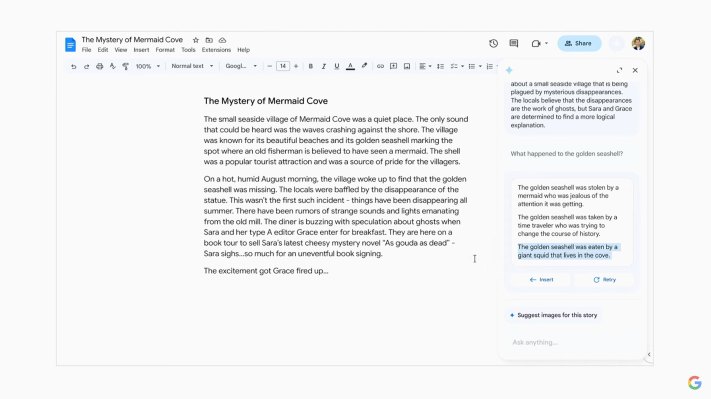Google’s going all-in on generative AI at its I/O developer conference today — so much so that it introduced a new tool called Sidekick that aims to help provide better prompts, potentially usurping the one thing people are supposed to be able to do best in the whole generative AI loop.
You may have heard of “prompt engineering,” which is, loosely, the practice of coming up with requests that are detailed, specific and intelligent enough to generate actually useful results from chatbots and image generation tools. It can be hard to figure out how best to prompt different models, and entire subreddits and other online communities have sprung up to compare notes on how to do it best.
Google’s new Sidekick panel, which it teased today onstage, lives in a side panel in Google Docs and is constantly engaged in reading and processing your entire document as you write, providing contextual suggestions that refer specifically to what you’re written.
The example provided by Google was of a children’s story in progress, with the Sidekick providing prompts about what comes next in the narrative. The demo then whooshed what happens if you take that prompt, then combine it with the entirety of the document in progress for additional context to better flesh out the results. The generated response was a potential next plot point for the narrative.
Sidekick can also provide AI-generated imagery based on what it sees in the document, so it can help illustrate the story as it’s written. Google also demonstrated it providing summaries of written conversations, offering speaker notes and more.
This is all rolled up in Google’s newly rebranded “Duet AI” suite of Workplace integrations, and isn’t too dissimilar from what Microsoft has shown off with its Copilot AI-powered features.
The question now is that if the AI becomes the prompt engineer, what do we call the prompt prompt engineer? Or are we soon to be out of the loop?

